Depending on where you sit in the education ecosystem, 2025 has felt either deeply discouraging or full of possibility. On one hand, earlier this year, the federal government signaled retreat from its commitment to education research, and just this week, the Trump administration took further steps to dismantle the Department of Education. National assessments show troubling stagnation: 12th-grade reading scores are down ten points since 1992, math outcomes are flat, and the US is experiencing a math crisis. On the other hand, artificial intelligence is transforming K–12 education at a dizzying pace. The global AI in education market, valued at $5.88 billion in 2024, is projected to reach $32 billion by 2030—a growth rate of 31% annually.
But while private investment in AI for education soars, federal investment in education research and development sits at just $28 per public school student—a figure virtually unchanged for years. The imbalance reveals a critical vulnerability. Schools are testing grounds for unproven technologies developed by companies chasing market share. Without a robust research infrastructure, we risk flooding classrooms with ineffective tools while students fall further behind. Our current research methods were designed for a pre-digital era, but still, we are rushing toward an AI-transformed education landscape before we’ve figured out how to drive student-level impact at scale.
The stakes are enormous. AI has the potential to help struggling students, individualize learning, and save teachers’ time. But we need research and development to understand whether and how these tools meaningfully improve learning. Meeting this moment will require new methods and new infrastructure that is agile, inclusive, and designed for an AI era.
Learning From Other Fields
Other sectors have faced moments like this and built the infrastructure to respond. When Sputnik launched, the Defense Advanced Research Projects Agency accelerated defense and technology breakthroughs. When COVID struck, pharmaceutical R&D produced vaccines in under two years. In medicine, simulations allow doctors to test treatments safely before applying them to patients. In aerospace, wind tunnels stress-test planes long before passengers ever board.
Education needs its equivalents. For example, here at the Advanced Education Research & Development Fund (AERDF), we are exploring the potential for causal models and synthetic data environments — artificially generated but realistic educational data—as a foundation for testing interventions. Simulations could serve as education’s “wind tunnels,” letting researchers and developers explore what works for whom and under what conditions before scaling in classrooms. States and districts could protect their data while leveraging it to create R&D labs where they can test the impact of different solutions, policies, and implementation approaches within their own contexts.
This approach doesn’t replace real-world research; it makes it safer, faster, and more effective. Early evidence from simulations lowers the risk for schools, which encourages their participation in research, and we need more schools, of every type, as education R&D partners. When teachers and students are partners in design and testing, the resulting solutions are more impactful and practical.
The Urgency of Now
Prioritizing education research in the age of AI is critical given the pace of change. We need a deeper understanding of AI’s impact on learning, and the science is lagging behind the practice. According to a July Gallup-Walton Family Foundation survey, 32% of teachers use AI weekly and estimate that it saves them nearly six hours per week. And yet 68% of teachers have no formal training in using the AI tools they’re integrating into classrooms.
Adoption without deep understanding is risky. Ineffective AI tools can waste instructional time and resources. More concerning, poorly designed algorithms or inappropriate use of AI can perpetuate or amplify existing inequities, particularly for students from marginalized communities who are often underrepresented in datasets used to train AI systems.
Perhaps most troubling, we risk missing opportunities to use AI to tailor learning and improve educational equity and access. Properly designed and rigorously evaluated AI applications could help identify struggling students earlier, customize learning pathways, and provide new kinds of learning experiences not otherwise feasible within the four walls of a classroom. To harness AI for meaningful impact, we need the research to distinguish between effective approaches and hype and to drive future innovations.
What it Will Take
Building a modern education R&D infrastructure will require increased funding, methodological innovation, and prioritizing equity.
First, education R&D investment must increase substantially to reflect the urgency of the current moment. These investments should include teachers and learners throughout the stages of R&D and should fund the development of robust models, synthetic data capabilities, advanced simulation environments, and rapid-cycle evaluation methods that can keep pace with technological change. At AERDF, we see that breakthroughs are possible when substantial, multi-year funding supports tackling urgent education challenges. We need more investments like these to truly meet the moment.
Second, the research community must embrace new collaborative methods. Let’s acknowledge the limitations of traditional approaches, like small-scale randomized-controlled trials. The model of isolated studies conducted over the years must give way to networked research efforts that can aggregate findings quickly and adapt to changing technological landscapes. This might include real-time data sharing protocols, standardized evaluation frameworks, and collaborative platforms that allow researchers, product developers, and practitioners to build on each other’s work.
Third, equity must be at the core of this infrastructure design. Historical patterns in education technology adoption show that innovations often benefit advantaged students first, widening existing gaps. This is why AERDF programs prioritize learners farthest from opportunity and the teachers who support them. New research methods must explicitly ensure diverse representation in datasets and prioritize evaluation of effects on historically underserved populations.
The Choice Ahead
If we don’t act, markets will shape education technology. The best-funded companies, not the most effective, will dominate classrooms. Wealthier districts will access cutting-edge AI tools while low-income schools are left behind. Tools will fail to address students’ unique needs and contexts. Worst of all, we will squander the chance to use AI to address systemic gaps and support students who need it most.
But if we succeed, the future looks different. We will understand how AI can support teachers in creating powerful learning opportunities for students. Properly designed, science-based AI tools will support personalization to address diverse student needs, allowing teachers to guide, mentor, and motivate. Education could finally achieve the rapid, evidence-driven innovation that other sectors already experience.
Education’s AI revolution is happening—with or without our guidance. The question is whether we will build the infrastructure needed to ensure that AI benefits all students.
Education research is not a luxury; it is critical for our future. Students cannot wait decades for breakthroughs. Policymakers and funders must act now to advance the pace of education R&D. Anything less is a risk we can no longer afford.




